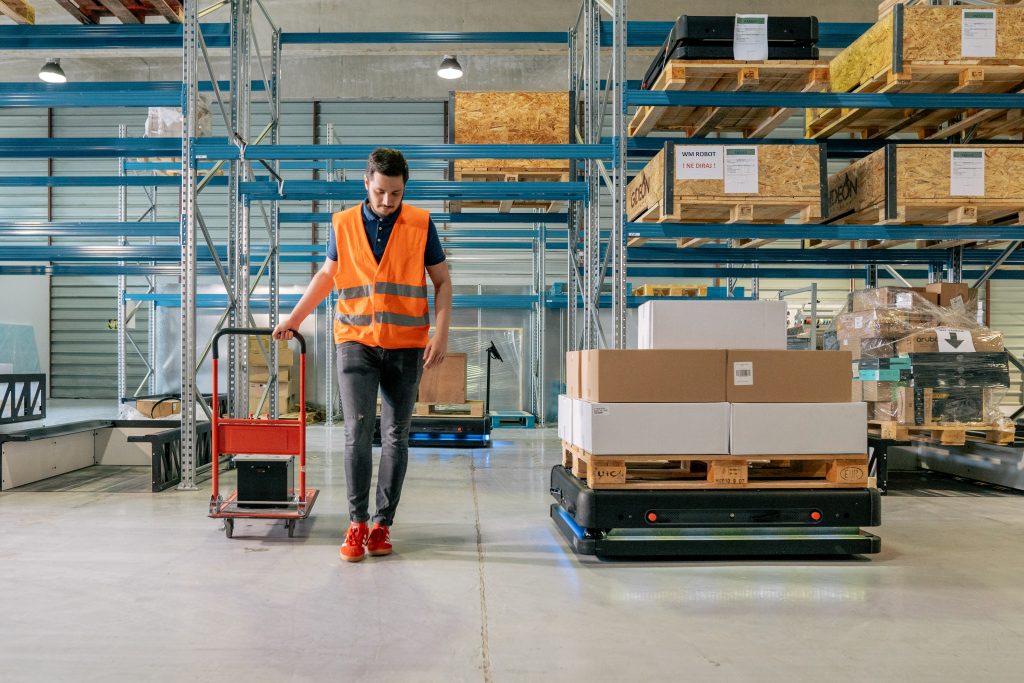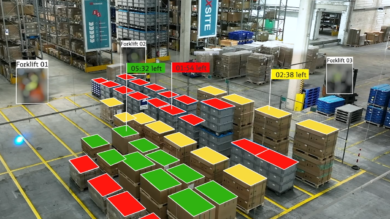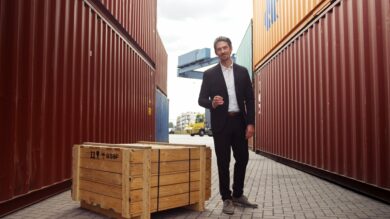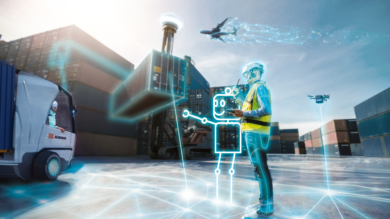“The basic strategy of “do more with less” has gained an entirely new level of urgency in these proverbially interesting times. Businesses face the challenge of having to do more – increasingly variable demand surges, customer expectations and sales channels – with ever scarcer resources – not enough people, space, data, and scalable tools.
To keep supply chains running smoothly, the world needs new solutions. And new solutions can be provided only by new automation technologies providing flexible growth capacity.
Building resilient and sustainable supply chains is one of the most important challenges businesses are facing today. It’s not just a matter relevant to a single company or industry. It’s an underlying challenge affecting the entire society. Remember the toilet paper “crisis” of spring of 2020 during the first lockdown? How the empty shelves added to the insecurity everybody felt? We may joke about hamstering away TP now, but we’re witnessing shortages of goods and raw materials create unsettling ripples across the economy.
This is why we need supply chain heroes, businesses that can transform their processes and adjust.
New solutions to support people
Most of today’s logistics facilities still depend on people. And this will not change. No machine can ever replace humans. People are going to remain the central value-creators for the foreseeable future. What we can do, however, is automate some of the simple repetitive tasks that still take up a great deal of a typical workday in a logistics facility.
And that has always been the reason why we try to make our physical work easier. Let’s remove the “3D tasks” – dull, dirty and dangerous – from supply chain operations. Just think of how much forklifts had changed material handling.
To build resilient supply chains, we need our material-handling solutions to be flexible to adapt to complex environments and workflows, where people and goods are in constant motion. They must be simple and easy to (re)deploy and scale – within hours, if needed – because the only thing certain about supply change is that variability is constant, be it variability of demand, products, labor availability or customer expectations.
Our solutions
We can achieve such flexibility with an entirely new generation of autonomous mobile robots, powered by autonomy relying on AI and 3D vision.
They can automate some material handling operations for the first time in complex environments. Our robotic vehicles can unload trailers autonomously, operate both indoors and outdoors and easily navigate even in loading bays where there’s no fixed infrastructure.

The new autonomy technology is complex, at the very cutting edge of mobile robotics today, breaking through the boundaries. However, this complexity remains under the hood. The robots themselves are flexible and simple to deploy and use.
Human-robot collaboration
The flexibility is at the core of achieving a true human-robot collaboration. To gain new synergies, the supervising AI software must understand how to streamline human-robot collaboration. Data generated by the close interaction between people, robots, and the existing infrastructure provides the basis for constant optimization of the workflows.
Robots relying on visual perception create safer, more productive and happier supply chain jobs. They increase the efficiency and productivity of operations. And by adding efficient and scalable growth capacities, they bring resilience and sustainability to the businesses and the wider economy.
We are proud that we are a part of this shift of material-handling automation, working on pioneering solutions for some of the most complex supply chain challenges.
Already smoothly running supply chains at DB Schenker
At DB Schenker, our autonomous mobile robots have already been put to good use, starting with our first project, launched in 2019 in Leipzig. At DB Schenker’s contract logistics facility in Leipzig, our AMRs are automating tasks within the order fulfillment process, facilitating workflow and allowing employees to focus on more complex tasks. We are excited about the future and it’s an incredible experience to be able to partner with innovation leaders who understand the transformative power of our technology and embrace its potential.
We’re only beginning to harness the potential of this new generation of material handling. Over the coming decade, we’ll see a proliferation of mobile robots of different shapes and sizes – and Visual Perception will power them all.”
Matija Kopić
Published: October 2021










